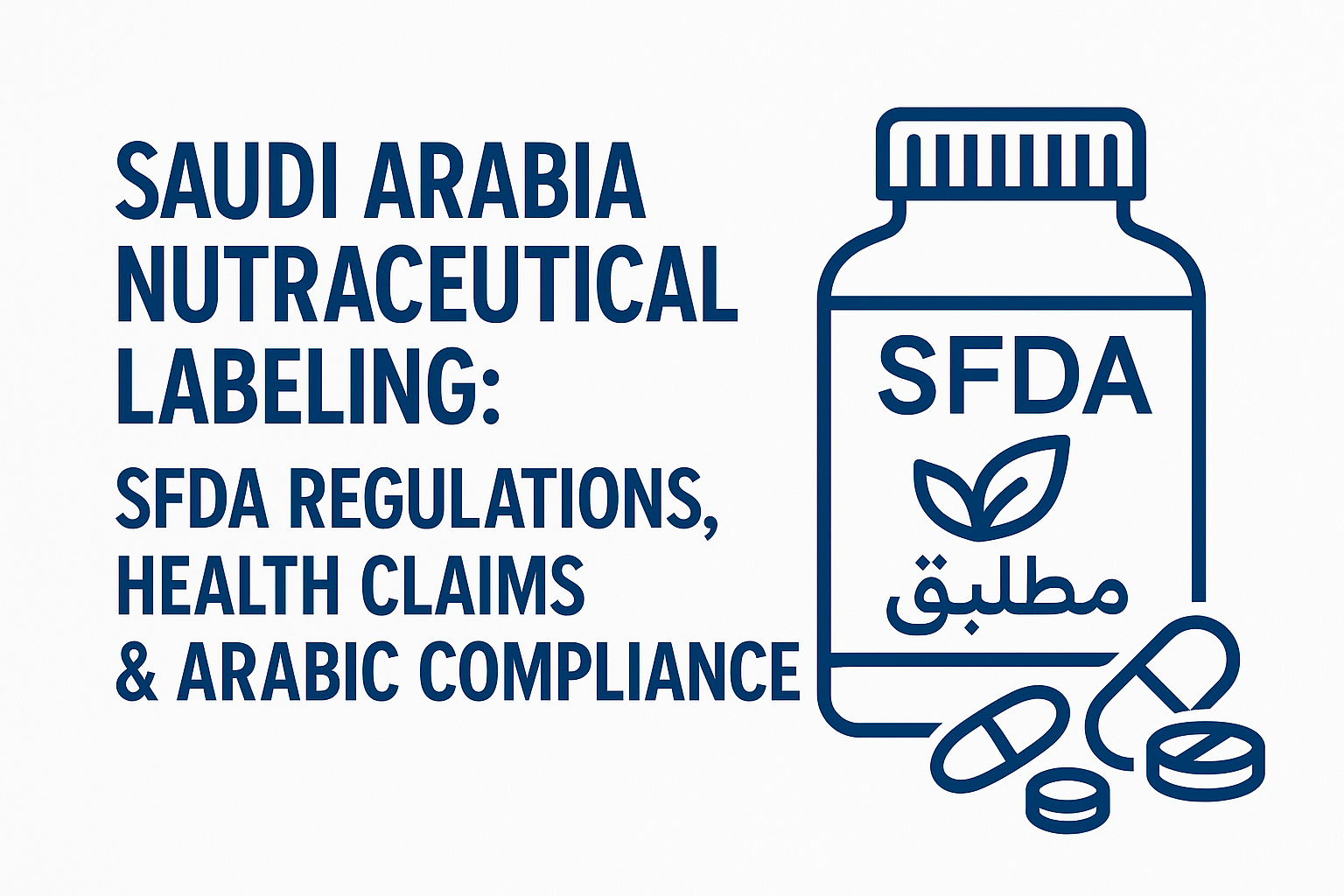

Understanding SFDA Supplement Regulations for Imported Products
The SFDA treats most nutraceuticals - including vitamins, herbal blends, and fortified foods - as regulated products that must be registered prior to import and sale. The process includes product classification, submission through the SFDA's online platform, and an in-depth review of composition, manufacturing site certifications, and labeling.
Key components of the SFDA's supplement regulations include:
- Mandatory Arabic labeling with equal prominence to English
- Approved formats for nutritional information and usage instructions
- Ingredient and origin traceability
- Clear display of manufacturing and expiration dates
Common causes for rejection include incomplete health claims, missing translations, and labelling that doesn’t align with SFDA visual requirements.
Health Claims Compliance in Saudi Arabia: Avoiding Rejection Risks
One of the most common areas of non-compliance is improper health claims. Brands accustomed to looser markets often carry over marketing language that is not permitted under SFDA standards.
The SFDA prohibits:
- Disease-related claims without clinical and regulatory approval
- Unsubstantiated functional claims (e.g., "boosts immunity")
- Vague or exaggerated benefit statements
To stay compliant, companies must submit:
- Scientific evidence (published studies or clinical trials)
- Copies of approval for similar claims from other recognized regulatory bodies
- Justification that clearly separates general wellness from therapeutic benefits
Avoiding these pitfalls not only reduces the risk of label rejection but also ensures long-term consumer trust.
Arabic Labeling Requirements: Language, Layout & Legal Accuracy
Arabic labeling is not simply a translation - it’s a regulatory requirement that must reflect legal precision and cultural accuracy. All information shown on the product must appear in Arabic, including:
- Product name, purpose, and category
- Usage instructions and dosage
- Storage conditions and warnings
- Manufacturer, country of origin, and importer details
The layout must give Arabic equal visibility to English and follow SFDA font size and placement standards. Errors in translation, use of unapproved terminology, or misalignment with design specifications can trigger immediate non-approval.
Including symbols such as the SFDA logo, Halal certification, and barcode in the correct format is also mandatory.
Preparing for Nutraceutical Market Entry in Saudi Arabia: Label Review Checklist
To reduce regulatory delays and ensure compliance, companies should follow a structured pre-submission checklist:
- Align label content with SFDA formatting templates
- Vet health claims through internal regulatory review
- Use certified translators familiar with SFDA medical terms
- Involve design, legal, and compliance teams in final packaging
- Conduct a mock audit against recent SFDA enforcement actions
Proactive label audits and early regulatory engagement can significantly cut approval time and increase the chance of smooth market entry.
Conclusion
As nutraceutical demand surges across Saudi Arabia, regulatory compliance - especially in labeling - has become a key determinant of commercial success. Missteps in health claims, layout, or translation can delay launches or block access entirely. By understanding SFDA expectations, investing in localized labeling strategies, and conducting rigorous internal reviews, companies can ensure their products are both compliant and competitive.
Need help navigating SFDA label compliance? Reach out for a custom regulatory consultation or label review.




.png)




